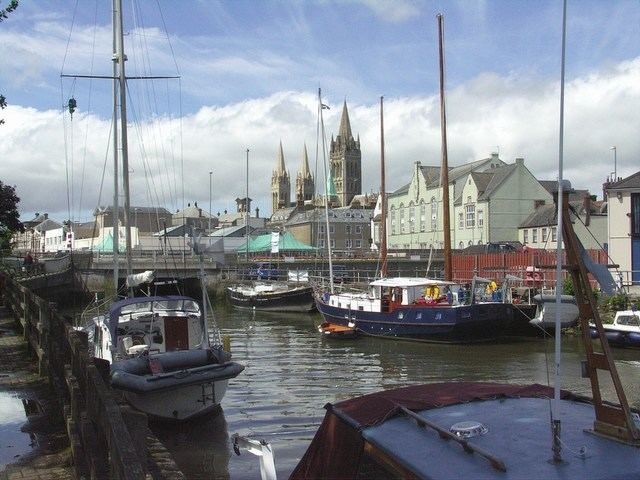Local time Sunday 9:07 AM | ||
 | ||
Weather 9°C, Wind NW at 27 km/h, 93% Humidity | ||
Kenwyn (Cornish: Keynwynn) is a settlement and civil parish in Cornwall, England, United Kingdom. The settlement is a suburb of the city of Truro and is situated 0.5 mi (1 km) north of the city centre. It gives its name to one of three rivers that flow through the city.
Contents
Map of Kenwyn, UK
History and toponymy
It is likely that the church of Kenwyn is very early and in fact the mother church of Truro. The original dedication is doubtfully St Keyne (Keynwen is the earliest form of the name which would be 'Keyn' and -wen' (white/blessed): by the 15th century it was assumed to be St Kenwyn (no medieval records have it with the prefix 'Saint'). Subsequently the dedication was attributed to St Cuby. The manor of Kenwyn was held in the 12th century by Richard de Luci after it had been confiscated by the King. Apparently the borough of Truro was established by the lord in part of the manor and this was the beginning of Truro as a town, then called Triuereu. In the Domesday Book the manor of Kenwyn appears as Tregavran (in later usage Trehaverne). It was in the possession over many centuries of the families of Lantyan, Beville and Grenville, and Enys.
The earliest form of the name is Keynwen (1259), from keyn ridge and gwen white but the modern Cornish form has been interpreted as "Splendid Chief".
Arthur Langdon (1896) describes a Cornish cross in the manor house grounds at Eastbourne, Sussex, which was originally at Kenwyn. Davies Gilbert, a former resident of the manor house removed it from a roadside gate west of Truro where it was in use as a gatepost and had it transported to Eastbourne in 1817. The shaft is ornamented on all four sides.
Notable buildings
Kenwyn Parish Church is more or less 14th and 15th century in date: (south aisle and tower 15th century). Restorations (1820 to 1862) have reduced the interior to its present uninteresting state. There is a peal of eight bells. The churchyard provides a fine view over the city of Truro and above the lychgate is an upper chamber (probably a schoolroom). On 24 March 2007, during a service at the church to mark the 200th anniversary of the parliamentary abolition of the slave trade throughout the British Empire, the life of Joseph Antonio Emidy was featured and some typical pieces of music from his time were played in tribute.
Lis Escop (the Kenwyn Vicarage of 1780) became after the establishment of the Diocese of Truro the bishop's palace. For some years it housed part of Truro Cathedral School (closed 1981) then the Community of the Epiphany (Anglican nuns) and is now, as Epiphany House, a Christian retreat and conference centre.
Kenwyn building at Truro College named after the river Kenwyn.
Notable residents
Paul Robins, the Bible Christian pioneer in Canada, was born in Kenwyn. Joseph Antonio Emidy, the composer and former slave is buried here, as is Charles Foster Barham, the physician and antiquarian. The Rt Revd Edward Harold Browne (Bishop of Winchester) was Vicar of Kenwyn, 1849–1857, and also held the living of Kea, and from 1854 the Norrisian Chair at Cambridge. John Rundle Cornish was also Vicar of Kenwyn and subsequently Bishop of St Germans. Conrad Meyer was a later vicar who also went on to become a bishop.
